Haim Maor | |
|---|---|
 | |
| Born | 1951 |
| Nationality | Israeli |
| Known for | Painting |
Haim Maor (born 1951) is an Israeli painter and academic.
Haim Maor | |
|---|---|
 | |
| Born | 1951 |
| Nationality | Israeli |
| Known for | Painting |
Haim Maor (born 1951) is an Israeli painter and academic.
Haim Maor was born in Jaffa, Israel in 1951. [1] [2] His parents are Holocaust survivors of Polish Jewish descent. [1]
Maor is a painter. [1] [2] His artwork focuses on representations of the Holocaust. [3] His work has been exhibited at the Auschwitz Jewish Center. [2] He was the recipient of The Minister of Science and Art Prize in 1994, the Sussman Prize from Yad Vashem in 1995, and The Ministry of Culture and Sport Prize in 2010. [4]
Maor is also an Arts professor at the Ben-Gurion University of the Negev in Beersheba, Israel. [2]
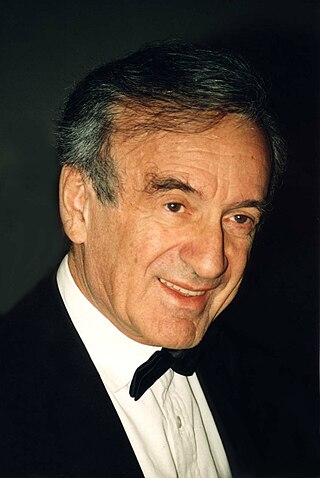
Elie Wiesel was a Romanian-born American writer, professor, political activist, Nobel laureate, and Holocaust survivor. He authored 57 books, written mostly in French and English, including Night, a work based on his experiences as a Jewish prisoner in the Auschwitz and Buchenwald concentration camps.

Daniel Libeskind is a Polish–American architect, artist, professor and set designer. Libeskind founded Studio Daniel Libeskind in 1989 with his wife, Nina, and is its principal design architect.
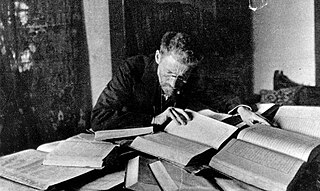
Israeli literature is literature written in the State of Israel by Israelis. Most works classed as Israeli literature are written in the Hebrew language, although some Israeli authors write in Yiddish, English, Arabic and Russian.

Aharon Appelfeld was an Israeli novelist and Holocaust survivor.
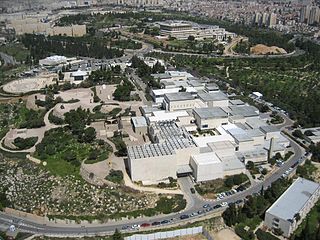
The Israel Museum is an art and archaeological museum in Jerusalem. It was established in 1965 as Israel's largest and foremost cultural institution, and one of the world’s leading encyclopaedic museums. It is situated on a hill in the Givat Ram neighborhood of Jerusalem, adjacent to the Bible Lands Museum, the Knesset, the Israeli Supreme Court, and the Hebrew University of Jerusalem.
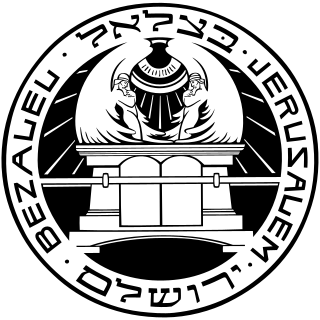
Bezalel Academy of Arts and Design is a public college of design and art located in Jerusalem. Established in 1906 by Jewish painter and sculptor Boris Schatz, Bezalel is Israel's oldest institution of higher education and is considered the most prestigious art school in the country. It is named for the Biblical figure Bezalel, son of Uri, who was appointed by Moses to oversee the design and construction of the Tabernacle. The art created by Bezalel's students and professors in the early 1900s is considered the springboard for Israeli visual arts in the 20th century.
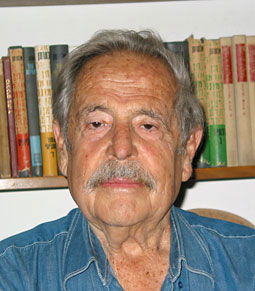
Haim Gouri was an Israeli poet, novelist, journalist, and documentary filmmaker. Widely regarded as one of the country's greatest poets, he was awarded the Israel Prize for poetry in 1988, as well as being the recipient of several other prizes of national distinction.

Menashe Kadishman was an Israeli sculptor and painter.
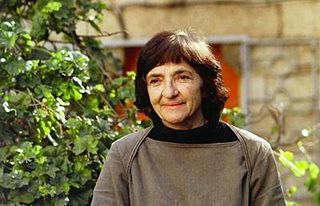
Zahara Schatz, was an Israeli artist, craftsperson, and designer. She was the daughter of Boris Schatz, who founded the Bezalel Academy of Art and Design in Jerusalem. She was best known for the six-branched menorah she designed for the entrance to the Yad Vashem, Israel's official memorial to the victims of the Holocaust.

Igael Tumarkin was an Israeli painter and sculptor.

Samuel Bak is a Lithuanian-American painter and writer who survived the Holocaust and immigrated to Israel in 1948. Since 1993, he has lived in the United States.

Percival Goodman was an American urban theorist and architect who designed more than 50 synagogues between 1948 and 1983. He has been called the "leading theorist" of modern synagogue design, and "the most prolific architect in Jewish history."

Nathan Rapoport (1911–1987) was a Warsaw-born Jewish sculptor and painter, later a resident of Israel and then the United States.

Events in the year 1945 in the British Mandate of Palestine.

Zigi Ben-Haim is an American-Israeli painter and sculptor who lives and works in New York City and Israel.

Yohanan Simon was a German-born Israeli painter.
Aharon Gluska is an Israeli–American painter.
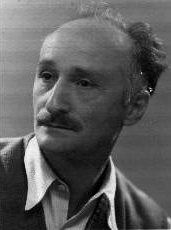
Alexander Bogen was a Polish-Israeli visual artist, a decorated leader of partisans during World War II, a key player in 20th century Yiddish culture, and one of the trailblazers for art education and Artists' associations in the emerging state of Israel.
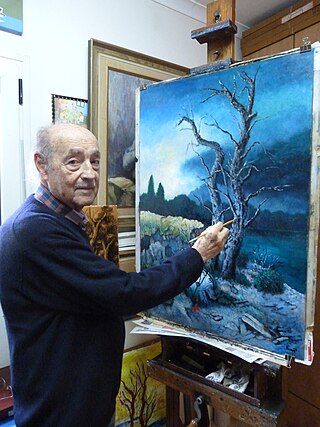
Zeev Kun is an Israeli painter of Hungarian origin. He is the father of the artist Shay Kun.

Michael Sgan-Cohen was an Israeli artist, art historian, curator and critic. His oeuvre touches different realms of the Israeli experience and the Hebrew language, displaying a strong connection to the Jewish Scriptures. His works were nurtured by his extensive knowledge of Art history, philosophy, Biblical Texts, Jewish thought and Mysticism, which in turn illuminated all these pursuits. His engagement with Judaism and the Bible as a secular scholar and his vast knowledge of modern and contemporary art contributed to the development of a distinctive approach which combined Jewish and Israeli symbols and images to create a multilayered and contemporary artistic language.